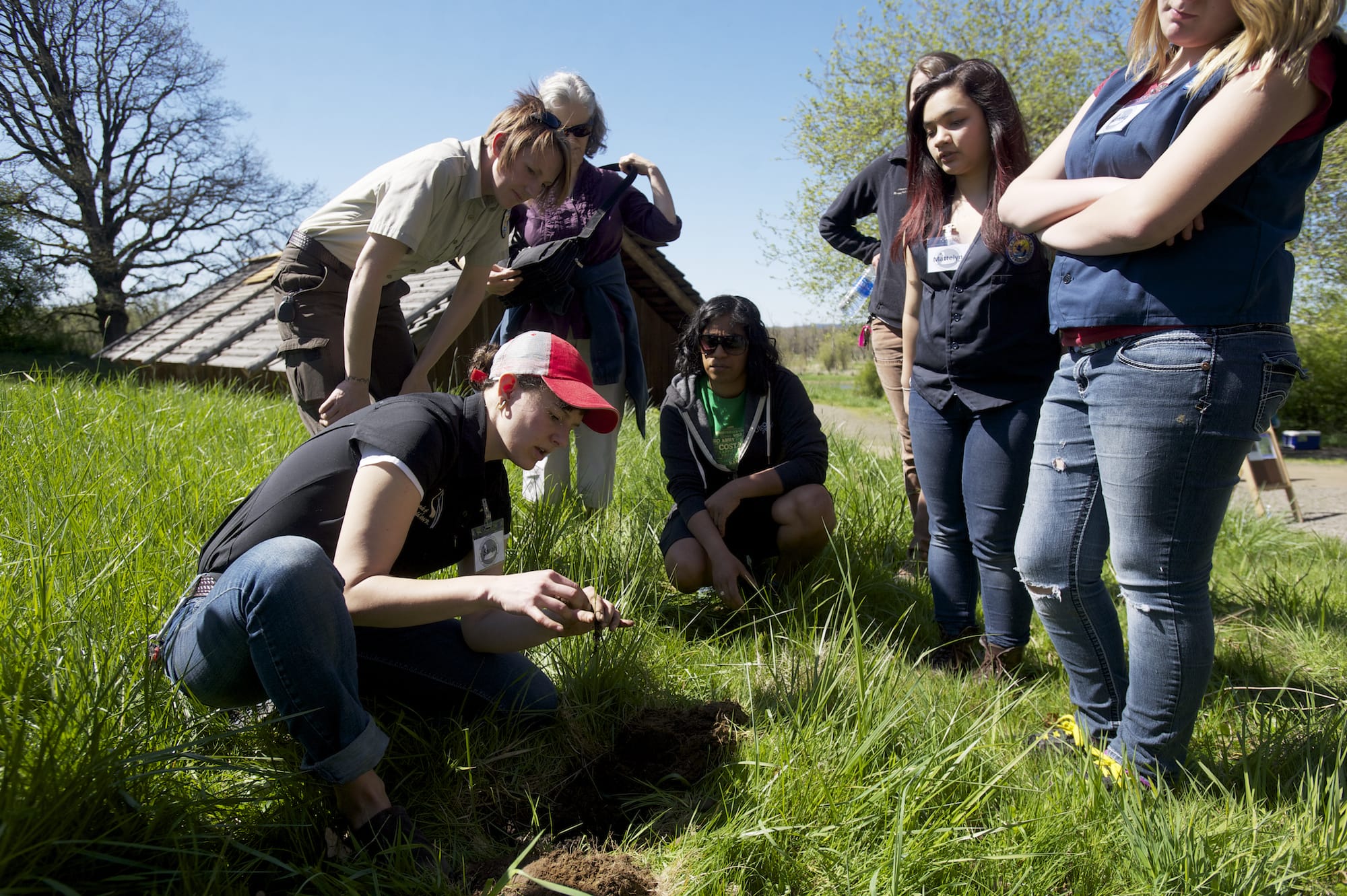RIDGEFIELD — Visitors to the Cathlapotle Plankhouse on Sunday didn’t just learn how native tribes incorporated roots of the camas plant into their diets. They had a chance to get their hands dirty as they planted dozens of the purple-flowering bulbs in a field overlooking the plankhouse, centuries-old oak trees and the Columbia River.
The camas they planted were rescued from a roadside in St. Helens, Ore., volunteer Joan Rainey of Longview said. It was dug up by well-meaning construction crews, but she and other volunteers replanted as much as they could along the road and took the rest home.
Rainey said she contacted plankhouse director Sarah Hill, who knew just the spot for the rescued wildflowers. A field on the Ridgefield National Wildlife Refuge near the plankhouse already had some camas growing there.
As Hill demonstrated how to plant the camas Sunday, she began to sink her shovel into the ground and stopped.
“Oh, I found another one!” Hill said, noting a camas plant already growing underfoot. “I almost dug it up.”
About 10 volunteers grabbed their shovels and began cutting 1-foot-wide divots in the field, making sure to give the camas room to grow among the grass, which competes with the camas for nutrients, water and sunlight. The group’s goal was to plant all 90 camas plants in the field.
Camas, also known as camassia quamash, has played an important role in Oregon’s and Southwest Washington’s history. The roots of the plants were a staple for tribes living in the region. Women would cultivate fields of camas and harvest the roots using handcrafted digging sticks called kup’n.
The camas root was then cooked for hours over hot stones. Upon tasting the camas root, a European settler praised its sweet flavor.
“They’ve been compared to figs and baked pears,” Hill said.
Camas also are among the wildflowers that play a key role in the threatened Garry Oak ecosystems of the Pacific Northwest, event organizers said.
The camas celebration and replanting on Sunday marked the spring opening of the Cathlapotle Plankhouse, a replica built on the wildlife refuge several years ago.
As they planted, volunteers had the chance to hear Sam Robinson sing a native song and chant as he beat on a handheld drum.
Robinson, acting chairman of the Chinook Indian Nation and a tribal liaison for the wildlife refuge, said Sunday that natural resources such as camas allowed native people to live in the same place, generation after generation, for hundreds of years.
“To plant camas and have those natural foods here again is great,” Robinson said.





